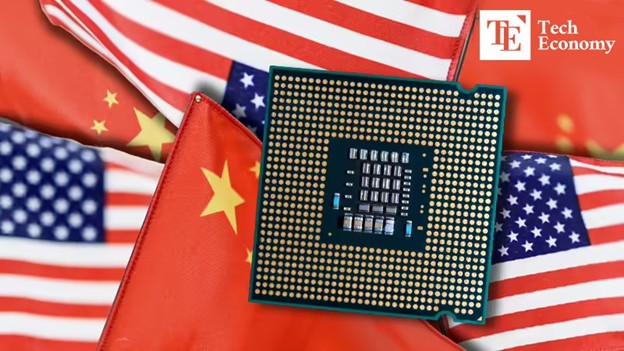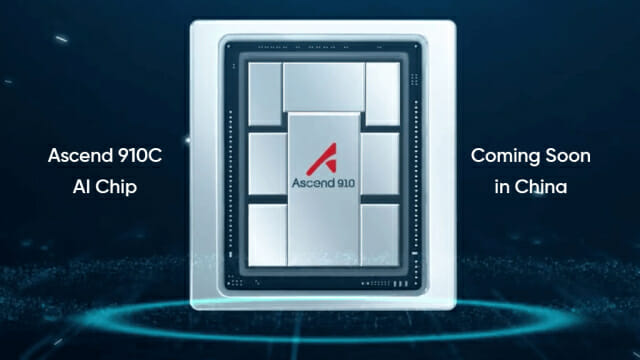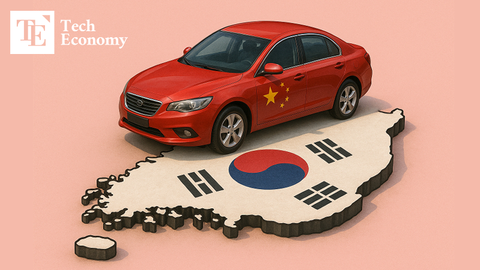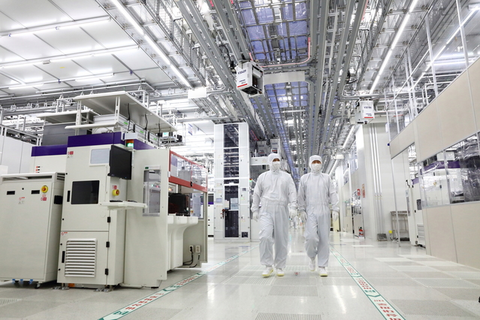“U.S. AI Chip Export Curbs Help Huawei” — Jensen Huang’s Warning
Input
Modified
Jensen Huang, NVIDIA CEO, Voices Concerns Over U.S. Semiconductor Export Restrictions Will Chinese Firms Like Huawei Fill the Void Left by U.S. Companies? Huawei Accelerates Push for 'Semiconductor Independence' with Strengthened In-House Production

As the United States doubles down on semiconductor export restrictions aimed at curbing China's technological advancement, concerns are mounting that these very policies may be backfiring. Jensen Huang, CEO of NVIDIA, a dominant force in the global AI chip market, has issued a stark warning: the U.S. government's regulatory stance may be inadvertently accelerating Huawei’s rise in the artificial intelligence hardware space. While intended to protect national security and preserve America's competitive edge, these measures may be creating a vacuum that Chinese tech giants are eager—and increasingly able—to fill.
With Huawei rapidly scaling its AI chip capabilities, what was meant to slow China down may be pushing it toward greater self-reliance and innovation. The consequences of this shift, Huang suggests, could be profound, not only for U.S. businesses but for the future of global technology leadership.
Export Bans and the Risk of Losing Ground
On May 6, during the 2025 Milken Conference in Los Angeles, Jensen Huang publicly voiced his discontent with the ongoing U.S. semiconductor export restrictions against China. He acknowledged the logic behind restricting access to critical technologies on the grounds of economic advantage or national security but argued that this view fails to consider a key point: governments like China’s are not constrained in utilizing their domestic computing power.
“They will secure the computing resources they already have,” Huang said, emphasizing that restricting exports does not equate to stalling technological progress in rival nations. NVIDIA, which commands an estimated 90% of the global AI chip market, has been barred from selling its products to Chinese customers due to these restrictions. This, Huang warned, has created a dangerous opportunity for competitors.
“If we do not supply products to a certain market and completely withdraw, someone else will step in,” he explained. “For example, Huawei is one of the most formidable tech companies in the world, and they could take that spot.”
Huang further stressed the strategic imperative of ensuring that American technological standards become the global foundation for artificial intelligence. “We need to make American standards the global standards, and ensure that AI is built on top of American technology,” he said.
Beyond geopolitical and strategic considerations, Huang highlighted the immense economic losses the U.S. is incurring. With China’s AI chip market projected to reach $50 billion in just a few years, the stakes are high. “This was a business opportunity we could have enjoyed,” he said. “If we could bring that kind of revenue back to the U.S., we could return it as tax dollars, create jobs, and significantly advance our technology.”

Huawei’s Strategic Leap in Semiconductor Technology
At the center of Huang’s concerns is the remarkable pace at which Huawei is capitalizing on the space vacated by American firms. The company has been accelerating its push into the AI chip sector, determined to reduce its reliance on foreign technologies. A Financial Times report published on May 4 revealed that Huawei is currently constructing an advanced semiconductor production line at its facility in Shenzhen, with the goal of manufacturing its own high-performance Ascend AI Processors.
These processors are designed to compete with those made by international giants like NVIDIA, ASML, SK Hynix, and TSMC. In 2023, Huawei introduced the Ascend 910B, followed by the Ascend 910C in 2024. The company is now reportedly exploring the feasibility of a newer version, tentatively named the Ascend 910D, and is in talks with select partners to assess its technical viability.
What distinguishes Huawei’s strategy is not just its design ambitions but its push for full supply chain localization. According to Dylan Patel, founder of the semiconductor consulting firm SemiAnalysis, Huawei is undertaking an unprecedented effort to develop every segment of the AI chip supply chain domestically. “From wafer manufacturing equipment to model building, Huawei is attempting to localize everything,” Patel explained. “No company has ever tried to do it all before.”
This ambition is matched by strategic foresight. Long before the U.S. imposed its export controls in 2020, Huawei had already begun stockpiling critical chip components. A March report by the Center for Strategic and International Studies (CSIS) disclosed that Huawei had received over 2 million logic dies for the Ascend 910B from TSMC, a move that allowed it to hedge against future supply disruptions. Two such dies can be combined to form the Ascend 910C chip, which means Huawei has the material capacity to manufacture 1 million chips. Even with a 75% yield rate, that translates into 750,000 fully functional AI chips—a formidable reserve for any tech company.
China’s Domestic Chip Production Gains Momentum
Once Huawei’s stockpile of TSMC-sourced dies is exhausted, Chinese foundries are expected to fill the gap. The Semiconductor Manufacturing International Corporation (SMIC), a leading Chinese chipmaker, has already started producing the Ascend 910B’s logic dies using deep ultraviolet (DUV) lithography technology. Because DUV equipment has not been banned under current U.S. export controls, SMIC remains a viable domestic supplier. However, its chip yield rate remains low—reportedly only about 20%.
Even so, SMIC’s capacity is expanding. CSIS estimates that by the end of 2024, the company had likely achieved its goal of producing 50,000 7nm wafers per year. If all of these wafers were eventually used for AI chip production—an optimistic assumption—Huawei could potentially scale up production to millions of chips annually, provided SMIC can improve its efficiency.
Meanwhile, the U.S. continues to escalate its restrictions. In addition to blocking high-performance AI chips like NVIDIA’s H100, even lower-performance models such as the H20, designed specifically for the Chinese market, are now under scrutiny. Discussions are also underway to embed geolocation tracking technologies into U.S.-made chips as an additional layer of control. But such measures may prove ineffective against a competitor that has already built a resilient and increasingly self-sufficient ecosystem.
As one market insider put it, “It’s questionable how effective these restrictions will be, given Huawei’s already robust domestic production base.”
In summary, Huang’s warning is not a critique of national security priorities but a call for strategic recalibration. If America’s goal is to maintain technological leadership in the AI age, then isolating itself from the world's second-largest economy may prove to be a costly miscalculation. In trying to contain China, the U.S. may be handing it the tools to thrive.





















